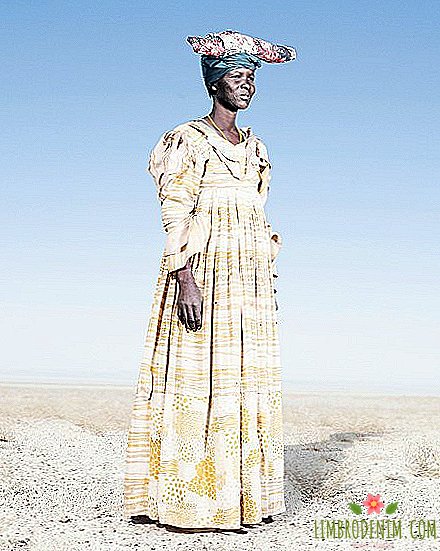"Herero": the fashion of the African tribe as a symbol of disobedience
EVERY DAY PHOTOGRAPHERS AROUND THE WORLD looking for new ways to tell stories or to capture what we previously did not notice. We choose interesting photo projects and ask their authors what they wanted to say. This week is a series of Hereros by British photographer Jim Notin, a graduate of the prestigious Lansing College and the Bournemouth Art Institute. During his studies, he realized that the artist came out of it too lazy, and the picture outlines reality much faster. Notin first came to the African Republic of Namibia 15 years ago as a graduate, and later returned to document the Herero tribe - people whose history and colorful clothes were determined by their colonial history.
The people in these photos are representatives of the Herero tribe in Namibia. Initially, I wanted to remove all the tribes there, but then I realized that it would take forever. I chose Herero for their fantastic style, and also for the fact that their clothes serve as an incredible portrait of German settlers. Women wear dresses to the floor, for which missionaries from Germany brought back there in the early 1900s. Over the years, dresses have become much more colorful, and hats, for example, have become covered with horns: historically, the Herero tribe is a pastoralist, and this is a very important part of their culture and way of survival. As casual wear, local ladies wear patchwork dresses and something more for weddings, funerals and ceremonies. They wear wedding dresses even after the wedding itself, but in general until the end of life. Men wear military uniforms at funerals or ceremonies in honor of the Herero ancestors who were killed during the suppression of the uprising by German troops. They took the form from the fallen soldiers of Germany or even bought it from the merchants - according to the ideas of the tribe, if you wear the uniform of the Germans, you can take their power.
I am interested in history and the people and especially the paradoxes behind the history of clothing - they amaze me. At the same time, there is no social context behind these photographs, although only a few know about the history of the war between Germany and Herero. But then almost 80% of the tribe were exterminated. Approximately 12 tribes live in Namibia, but it is the Herero that is most easily recognized by clothing, although the urban ones try to dress more modernly. For Herero, clothing is the essence of their history, a symbol of survival, disobedience and identity.
























